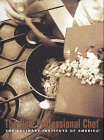
1916 Bread Making Methods
Excerpted from the 1916 edition of the Manual for Army Bakers
[Sponge and dough method] [Straight-dough method]
There are two general methods of making bread:
To make a dough by the sponge and dough method
By the sponge and dough process, in which a sponge is first set, by using about one-half of the flour, about four-sevenths of the water, and all the yeast, and incorporating all other ingredients in a second operation some time later, when the dough is made.
Take one-half of the flour to be used, all the yeast, and four-sevenths of the water. Make a mixture that will just drop from the hands when taken up. This mixture is called the sponge and is set to rise at a temperature of 80o F. When it is about doubled in volume bubbles will be seen breaking on the surface and the sponge will begin to fall. It is now said to be ripe and ready to be made into dough. (The proper time to take a sponge is just after it has fallen 1 inch for the first time.) If undisturbed, it will raise and fall two or three times, but if this takes place the dough is liable to sour. A strong flour will stand more age in the sponge than a weak one.
As soon as the sponge is ripe pour in the remainder of the water, after dissolving in it the sugar and salt to be used. One-half the cottonseed oil or lard to be used should be added at this time. Make the sponge into a thin batter. After the sponge is well broken up and no stringy portions remain add the remainder of the flour. Mix the whole, which now becomes the dough, until it becomes a stiff, elastic mass.
Clean one end of the trough carefully with the scraper and grease it well with cottonseed oil or lard. Cut of about 30 pounds of dough from the mass, thoroughly knead it until the desired stiffness is obtained, and place it in the end of the trough just cleaned. Continue this process until the whole dough has been "cut over." In cutting over the dough use the remainder of the cottonseed oil or lard. The dough should be cut over at least twice. Dam up the dough with the patrician board. The dough should about half fill the part of the trough occupied by it. (if necessary the dam board can be held in place by a sack of flour placed on the opposite side the dough.) Set to prove at a temperature of 80o F. When the dough had risen to the top of the trough and has fallen 1-inch it should be punched the first time. Allow to rise the second time until nearly to the top of the trough. Punch the second time and give it about 10 minutes proof. The dough is now ready to be rounded up on the bench or molded into loaves.
The loaves should be rounded up and allowed to prove about 15 to 20 minutes on the bench.
For garrison bread make 2-pound loaves, scale at 2 pounds 3-1/2 ounces, 6 loaves to the pan. The molded loaves should be firm and about fill half the pan. Set to prove at about 80o F. When the loaves are about doubled in size they are ready for the oven.
To make a dough by the straight dough method
By the straight dough process, in which all of the ingredients are incorporated in one long process of mixing and kneading rather than in two short ones, as in the sponge and dough process.
Take all the flour, water, yeast, sugar and salt, and one-half the cottonseed oil or lard to be used (dissolve salt and yeast in separate receptacles), and mix until it is a stiff elastic mass. Clean one end of the trough and grease it well, as explained for the sponge and dough process, cut over the dough in the same manner, and work in the remainder of the cottonseed oil or lard. When the dough is thoroughly kneaded dam it up and set to prove. It will be ready to punch the first time in about 5 hours, punch and allow to rise about 40 minutes, punch second time and allow to rise 20 minutes. The dough is now ready to be rounded up on the bench. For garrison bread make 2-pound loaves, scale at 2 pounds 3-1/2 ounces, 6 loaves to the pan. The molded loaves should be firm and about fill half the pan. Set to prove at about 80o F. When the loaves are about doubled in size they are ready for the oven.
Return to Bread Baking in World War I Army
Bibliography
Deitrck, Capt. L.L., ed. Manual for Army Bakers. War Dept. Doc. 563. Washington: GPO, 1916. 123pp. This material is taken from pages 43 and 48-51.
October 1999
| Bulletin Board | Keyword Search |
| Bookstore | Links |
| About Us | Recent Additions |

